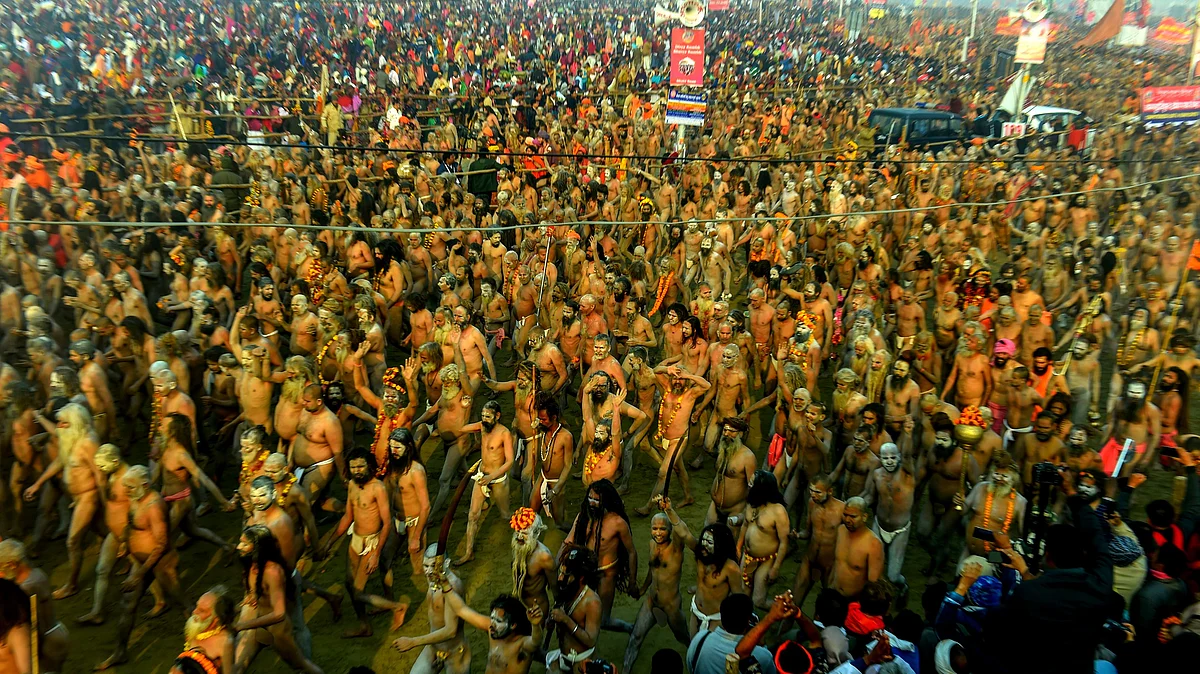Millions take bath on second Shahi snan in Kumbh on Mauni Amavasya; thousands take deeksha as Naga Sadhus
On the occasion of Mauni Amavasya, millions of Hindu devout, led by naked ash-smeared Naga Sadhus, plunged into the frigid waters of the holy Ganges River to wash away their sins, on Monday

On the occasion of Mauni Amavasya, considered to be the most auspicious day of the Kumbh Mela, millions of Hindu devout, led by naked ash-smeared Naga Sadhus, plunged into the frigid waters of the holy Ganges River to wash away their sins, on Monday.
"We are expecting over 2.5 crore people today who will take a dip in river. Almost 15 million people have already taken a dip and the number may grow by evening,” Awanish Awasthi, Government spokesman said.
The bathing for the ‘Shahi Snan’ at Mauni Amavasya started at around 0300 hours and will continue till late after midnight on Tuesday.
It was the sea of humanity that had descended on the river bed of the Ganges – some had taken bath while others waited patiently for their turn. Men in their underpants, women in their sarees and children, some of them naked, took a plunge into the ice-cold water to cleanse their body and soul of sin.
The star attraction of Monday’s royal bathing was the Naga Sadhus. Thousands of them just wearing marigold garlands raced to the river amid the cacophony of their religious chants. Applause rose from tens of thousands of pilgrims waiting behind barricades as religious heads of different Hindu monasteries reached the bathing points, called ghats, riding silver chariot. Some were even carried on silver palanquins. Marching bands accompanied them as they initiated the Royal bathing process.
The head of the Monasteries, called Akharas, threw flowers on the Hindu devotees as they shouted Har Har Gange! (Long live Ganges).
"Sadhus of Mahanirvani akhara took the lead in taking a dip in the Ganga. The procession was led by young naked sadhus who even displayed their martial art," Awasthi said.
Several squads of mounted police regulated the flow of pilgrims to and from the bathing ghats. About 50,000 policemen have been deployed to keep order at the festival.
There are 22 bathing ghats spread over in 3 km long river bed. Two of these ghats are reserved for Akharas and their royal baths where commoners are not allowed to take bath.
Last week, thousands of people chopped off their hair and took part in a sacred fire ceremony after which they were initiated into the ancient order of Naga Sadhus, The Times of India reported. According to the reports, more than 10,000 people are taking deeksha and becoming Naga sadhus during this Kumbh despite the tough life and regulations associated with this sect. The new entrants include young students and engineers also.
The Times of India quoted Mahant Hari Giri, chief convener of Juna akhara and general secretary of Akhil Bharatiya Akhara Parishad as saying, “Any person who has a strong desire for vairagya (detachment) irrespective of caste, colour or religion is eligible to become Naga. Many Muslims have been accepted as have several Christians and people from other religions. So have people who have earlier been doctors or engineers.” It is a strange phenomenon that youth and professionals are joining this akhara and thus embracing hardships and tough regimen of this sect.
According to Hindu mythology, the Kumbh Mela celebrates the victory of gods over demons in a furious battle over nectar that would give immortality. The myth says the gods retrieved the nectar by churning a massive ocean of milk
As one of the gods fled with the pitcher of nectar across the skies, it spilled on four places – Allahabad, Nasik, Ujjain and Haridwar – where Kumbh mela is organized four times every 12 years. Hindus believe that sins accumulated in past and current lives require them to continue the cycle of death and rebirth until they are cleansed. If they bathe at Ganges on the most auspicious day of the most blessed festival, believers say they can get rid of their sins.
Tens of thousands of pilgrims slept at night on the vast festival grounds spread over in 3600 hectares ground while many huddled together in makeshift tents to fight the cold. The vast Kumbh Mela ground has been turned into a tent city. Over 1 million small tarpaulin tents – green, blue and brown in color – have come up.
Follow us on: Facebook, Twitter, Google News, Instagram
Join our official telegram channel (@nationalherald) and stay updated with the latest headlines